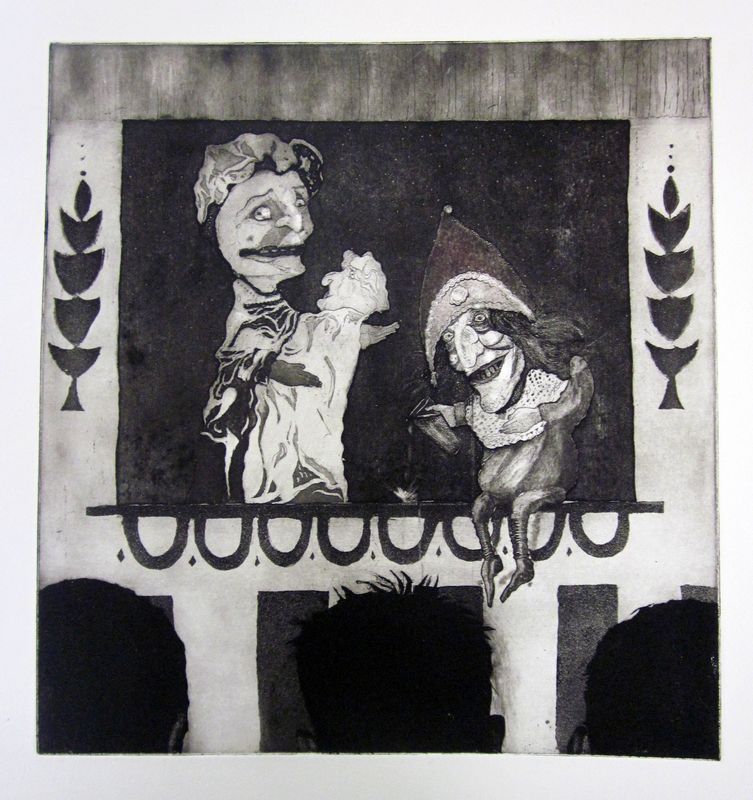Etching Safely at Swansea Print Workshop
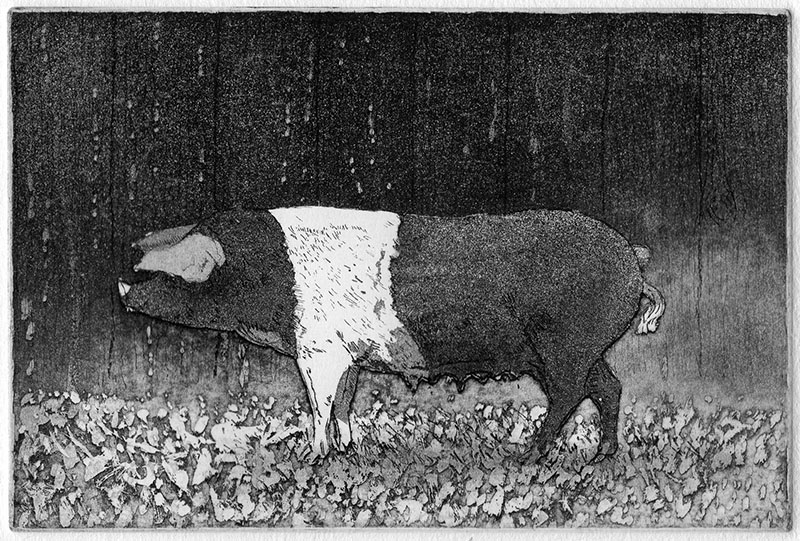
Etching has traditionally been associated with very hazardous processes using etchants that have necessitated very strong extraction for fumes, exposure to resin dust in the aquatint process.
We took the route pioneered by Edinburgh Printmakers in searching for a benign work environment.
We use cheap cooking oil to clean up oil based inks instead of turps substitute. this makes a big difference for the halth of people working in the environment for long periods.
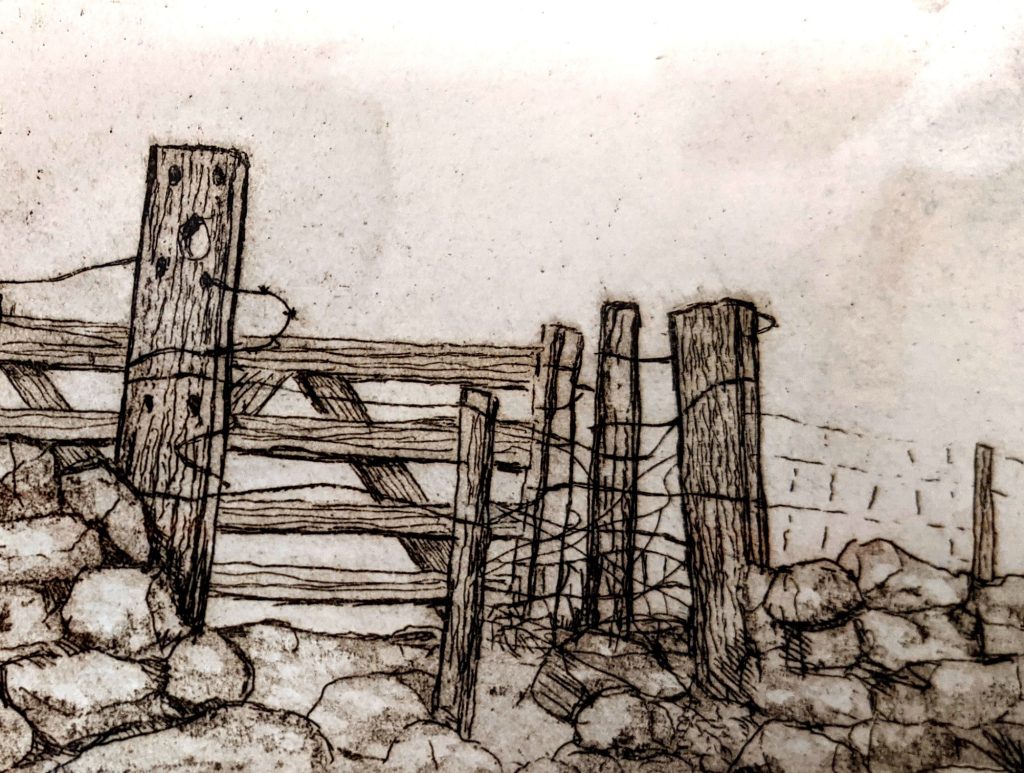
Etching is an intaglio printmaking process in which lines or areas are incised using acid into a metal plate in order to hold the ink. In etching, the plate can be made of iron, copper, or zinc.
To prepare the plate for etching, it is first polished to remove all scratches and imperfections from the surface. When the surface is completely smooth, it is covered evenly with a layer of an acid-resistant varnish or wax, which is called the ground.
Using a blunt stylus called an etching needle, the printmaker gently scratches away parts of the ground following the design, thereby exposing the metal beneath.
Etching is an intaglio printmaking process in which lines or areas are incised using acid into a metal plate in order to hold the ink. In etching, the plate can be made of iron, copper, or zinc.
To prepare the plate for etching, it is first polished to remove all scratches and imperfections from the surface. When the surface is completely smooth, it is covered evenly with a layer of acid-resistant varnish or wax, which is called the ground.
Using a blunt stylus called an etching needle, the printmaker gently scratches away parts of the ground following the design, thereby exposing the metal beneath.
Once the entire design has been drawn into the ground, the back of the plate is covered in plastic and the plate is then lowered into the acid.
The acid eats into the metal only in the exposed areas creating recesses that can retain ink. The depth and width of these recesses is determined by the length of time the plate is exposed to the acid: a longer exposure will cause deeper and wider recesses, which hold more ink and will thus print darker lines on paper.
This process can be used to create a nuanced tonal palette. To create darker tones, certain areas can be bathed in acid several times, while lighter areas are protected from further acid bite by covering them with ground. Once the plate has been satisfactorily bitten by the acid, the printmaker removes the ground with a solvent.
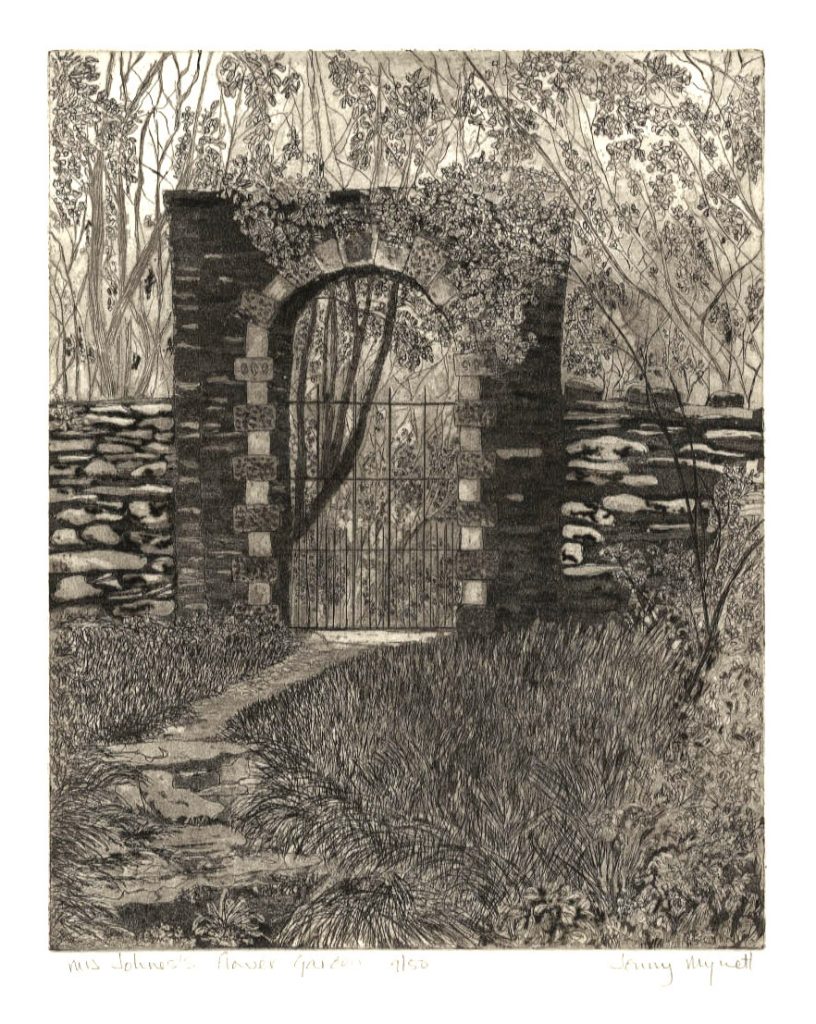
After the ground is removed, the plate is ready for inking. In an intaglio process, the ink is retained in the incised lines. A cloth ball, cardboard tab, or equivalent material is used to gently spread ink across the whole face of the plate; the same material is used to remove most of the excess ink from the surface. The plate is further cleaned using a tarlatan rag (heavily starched cheesecloth).
As a last measure, printmakers often use the sides of their hand to wipe away the last bits of ink. In certain cases, a printmaker can choose not to clean the plate entirely, but to leave a thin layer of ink on the plate to create tone.
The main breakthrough came with Andrew Baldwins invention of BIG etching ground
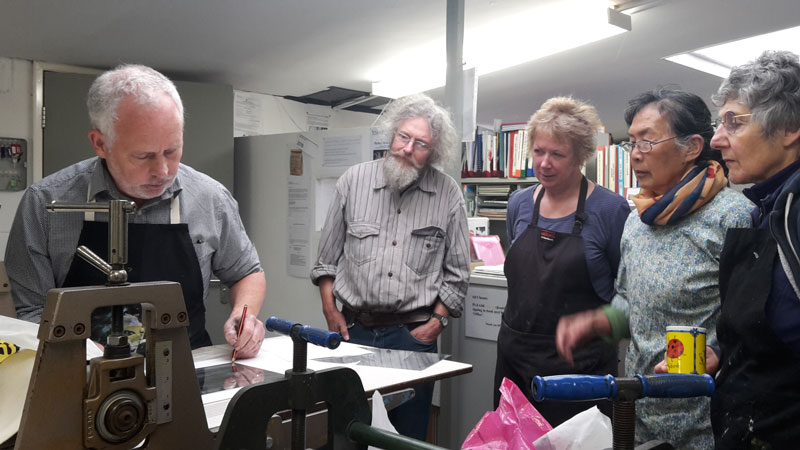
What is safe etching?
- No hazardous fumes
- No exposure to dangerous acids or solvents
- Accessible processes for mark-making
- Consistent results
- Compatible with traditional effects (aquatint, sugar lift)
- Innovative advanced techniques
As a result of a grant by the Arts Council of
BIG Safe Etching at SPW offers the printmaker a safer alternative
OUR FACILITIES AND SERVICES
SPW has adopted BIG Safe Etching as its standard approach to etching.
ABOUT BIG (Baldwins Ink Ground) and its creator
BIG (Baldwins Ink Ground) is a vegetable-based ground used as a
The introductory workshop offers the opportunity to use both copper and aluminium plates. You will cover a traditional linear
You will learn about the safe etching area, tools and equipment,
